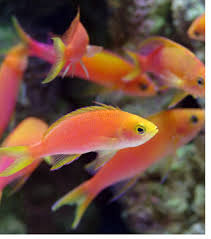The Dragon and its Connection with Symbols of Love and Sacrifice in Chinese Culture

In Chinese culture, the dragon is one of the most powerful and revered symbols, often associated with imperial authority, strength, and good fortune. However, the dragon also holds deep connections to themes of love and sacrifice, which are embedded within the cultural stories and philosophical beliefs that have been passed down for centuries. The complexity of the dragon’s symbolism, particularly in the context of love and sacrifice, offers insight into the profound and intertwined nature of these ideals in Chinese tradition.
The Dragon as a Symbol of Power and Protection
Traditionally, the Chinese dragon is a symbol of imperial power and divine protection. With its serpentine body, lion-like mane, and antlered head, the dragon exudes an image of majesty and grace. The dragon’s role as a guardian of the empire meant that it often appeared in the context of power struggles, military victories, and divine intervention. However, beyond the grand displays of power, the dragon also symbolizes a more intimate and personal form of love.
Love and the Dragon: The Story of the Dragon Princess
One of the most famous love stories associated with the Chinese dragon is the legend of the Dragon Princess, or Long Nu. In this tale, the dragon prince, a powerful and noble creature, falls in love with a mortal human man. Despite the vast differences between them, they share a deep and enduring love. However, their love is tested by the limitations of their respective worlds. The Dragon Princess faces immense challenges as she navigates the balance between love for her mortal lover and loyalty to her family and royal responsibilities.
In this story, the dragon represents not just physical power, but emotional resilience. The Dragon Princess’s sacrifice for love echoes the theme of ren (仁), which is often translated as benevolence or compassion. Her willingness to defy tradition and her family’s expectations for the sake of love is a testament to the deep emotional sacrifice that love can demand in Chinese culture. The tale of the Dragon Princess highlights the struggle between duty and personal desire, a theme that resonates deeply in both historical and modern Chinese narratives.
Sacrifice and the Dragon: The Tragic Story of the Cowherd and the Weaver Girl
Another well-known story where the dragon is symbolically tied to love and sacrifice is the tale of the Cowherd and the Weaver Girl (Niulang and Zhinu). The dragon, in this context, is not directly involved in the narrative, but its symbolism of power and protection is reflected in the celestial forces that influence the fate of the lovers. In the story, the Cowherd, a poor man, and Zhinu, a fairy who weaves the clouds, fall deeply in love. However, their love is forbidden by the heavens, leading to their tragic separation.
In some versions of the story, dragons are seen as protectors of the heavens, embodying the power to control the forces of fate. The ultimate sacrifice in the tale is the Cowherd’s willingness to continue his life of hardship in the hopes of being reunited with his love. The separation of the lovers, symbolized by the Milky Way, can be seen as an allegory for the sacrifice one must make in the pursuit of love—whether it is enduring hardship or overcoming immense obstacles.
The Dragon and the Symbolism of Selflessness
In Chinese culture, sacrifice often goes hand in hand with selflessness and devotion, virtues that are key components of the dragon’s symbolic meaning. Dragons are not only seen as protectors of wealth and power but also as guardians of moral values, such as loyalty and devotion. In the story of the “White Snake” (Bai She Chuan), another Chinese legend where love and sacrifice are key themes, a dragon plays a central role in shaping the fate of the two lovers. In this tale, a snake spirit, who transforms into a beautiful woman, sacrifices everything for the love of a human man. The sacrifice involves not only physical transformation but the willingness to face death in order to maintain love and loyalty. The dragon in this context is a protector and a force that ensures the lovers’ enduring connection despite the adversities they face.
This myth also reflects the Chinese concept of xiao (孝), which refers to filial piety or the respect for one’s parents and ancestors. The sacrifice of the dragon (or dragon-like beings) in these stories underscores a connection to the ultimate act of selflessness—putting the well-being and happiness of others before one’s own.
The Cultural Intersection: The Dragon as a Connector of Love and Sacrifice
The dragon’s intersection with love and sacrifice in Chinese culture offers a nuanced perspective on relationships, loyalty, and the moral challenges individuals face. In the larger framework of Chinese philosophy, the dragon’s symbolism reflects the dualities that define life: strength and vulnerability, power and humility, love and loss. It serves as a reminder that love, in its most profound forms, often requires sacrifice, and that true strength comes from the willingness to protect and nurture those we care about.
Through these timeless stories and the symbolic role of the dragon, we can see how Chinese culture intertwines concepts of love, sacrifice, and devotion into a unified understanding of what it means to live with honor, to protect others, and to give of oneself for the sake of love.
In conclusion, the dragon in Chinese culture transcends its role as a mere mythological creature of power. It is an emblem of love’s deepest sacrifices, reminding us that sometimes the greatest acts of devotion come with immense personal cost. Whether in stories of celestial beings, human lovers, or divine protectors, the dragon continues to be a symbol of the enduring connection between love and sacrifice, an essential aspect of the human experience.

